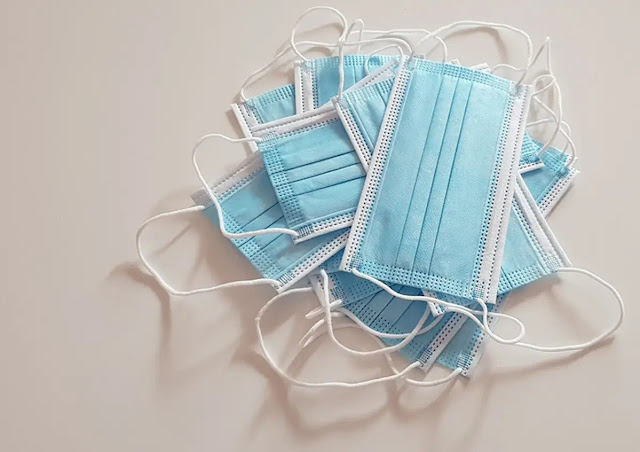Who isn’t trying to save money right now?
With gas prices up this year over 8% and rent costs up from last year as much as 26%, finding ways to save your money is more important than ever. Maybe you still have some student loans or other debt you are trying to payoff, or just keep up with the rising costs of necessities.
For nurses working long, 12-hour shifts, saving money can come with specific, unique challenges. Nurses don’t always have set or predictable schedules, and can work many weekends, holidays, or even night hours. It can be hard to find time in your busy schedule to write out a budget, and it can be easier to make quick, last-minute purchases when you are driving home exhausted after those long shifts.
I have been a nurse for over 11 years and paid off over $48,000 in debt as a single parent working 12-hour shifts in the hospital. I contribute much of my success in paying off my debts to consistent budgeting and putting in extra effort finding ways to save money as much as possible.
Here are 8 tips to help you save money as a busy nurse.
1. Take advantage of discounts offered to nurses
Many products and services offer discounts to nurses year-round outside of nurses’ week. It can never hurt to ask for and take advantage of these healthcare worker discounts. Some cell phone carriers, such as Verizon and AT&T, offer exclusive discounts for nurses and their families. Scrub stores will often-times offer discounts for nurses as well.
Nurses can try searching on Healthjob.org for a list of 2022 Discounts for Nurses. Many companies listed on this site offer special deals for nurses, such as sunglasses, shoes, mattresses, and more. GovX.com is another website offering exclusive discounts for health care personnel, including nurses, on over 700 brands.
Check For Nurse Discounts on Common Expenses
◉ I am currently saving 10% per month ($100) on my son’s daycare costs because I am a nurse.
◉ I have also saved money on my monthly rent in the past with a special nurse’s discount.
Bottom line, always ask for and search for healthcare worker discounts before making any purchase. You would be surprised how much you can save by trying this tip alone. If not, the worst that could happen is you are told no. But you won’t know unless you ask.
2. Skip or limit the fancy coffee purchases
Yes, we are busy nurses who run on caffeine. It might as well be part of the food pyramid specific for healthcare workers! We all know that Starbucks coffee just hits different (their cold brew iced coffee has a special place in my heart) but indulging every shift can really impact your wallet and overall budget.
For nurses who are trying to find a place in their budget to save money, this can be a great place to start. You don’t have to eliminate the Starbucks runs altogether. Try limiting them to once a week, or twice a month; whatever you think is achievable for you.
You can also try bringing your own coffee maker, coffee, and sweetener to keep on your unit to eliminate those last-minute expensive coffee purchases on the way to work. If you know you are always in a rush in the mornings and just NEED to stop somewhere for coffee, try Circle K’s Sip and Save monthly subscription. For just $5.99 a month you can get one free coffee per day. If you stop for your morning coffee there 3 days per week, that comes out to only 49 cents per coffee.
This won’t save you hundreds of dollars by any means; but it’s a solid option if you are needing to find a place in your budget to cut back on some expenses.
3. Carpool to Work
With the cost of gas nowadays, depending on the distance of your work commute and your schedule, carpooling to work could truly make a difference in decreasing your monthly gas costs.
Some facilities may even offer an incentive for staff members to consistently carpool to work. If you have a work buddy that you know you vibe with, this can be a great way to save you both some money each month on fuel costs.
4. Keep a stash of snacks and essentials in your locker
I am embarrassed to admit, I have spent my fair share of money on vending machine snacks during my hospital shifts. Many times, I just forgot to bring snacks to work. I also loved to pack myself some healthy celery and carrot sticks, and then change my mind last minute and decide that I NEEDED to have a salty bag of potato chips STAT. Vending machine snacks can be as much as $4 per item!
Snack items will ALWAYS be cheaper when bought in bulk at grocery stores. Try making a snack run at the grocery store before your shift and keep your locker full of items such as chips, trail mix, gum, candy, or instant coffee packets. Basically, anything you know you might have a sudden craving for during a stressful shift.
5. Plan your big work purchases around prime discount seasons
Nurses know that good shoes, scrubs, and compression socks can get pricy. Nursing is a very physically demanding job, and these items are essential for nurses to their job well. Nurses spend a LOT of time on their feet and can do a lot of squatting and heavy lifting at work.
I once ended up with a bad case of plantar fasciitis because I tried to “save money” on buying cheap, off branded shoes to wear to work. The medical bills treating this ended up costing WAY more than an excellent new pair of shoes would have cost me! Also, you do not want to be working a 12-hour shift in scrubs that are poorly made and uncomfortable. I learned that shoes and scrubs, while expensive, are essential for me to spend money on as a nurse.
Try to save on these larger, essential purchases, by trying to plan them around key discount times. I would typically buy new scrubs and new work shoes twice per year. I would always try to buy them during Nurses’ week in May, and again on Black Friday in November when discounts may be larger and more readily available. By planning these essential purchases this way, you can still save yourself some money without sacrificing the quality of the items you need to purchase.
6. Buy nursing supplies gently used
If you know that buying brand new nursing gear is just completely out of your budget right now, buying some gently used nursing gear can be a great option when trying to cut costs.
A quick search on Facebook marketplace shows that you can potentially find gently used Littman Stethoscopes going from as little as $12 up to $50. These stethoscopes can be hundreds of dollars brand new. You do not need a shiny, new stethoscope to do your job effectively. If your nursing gear is clean, and in good working condition, it does not really matter if it was purchased gently used or new.
For the nurse just starting out, or looking to temporarily cut costs, buying some of your supplies used can be a great option until you can save up for a more expensive item on your wish list in the future.
7. Plan your meals and pack your lunches
I know from experience, that when working 12-hour shifts this can be VERY hard to do, especially if your shifts are back to back. I struggled with meal-planning and STILL do. For nurses working irregular schedules and 12-hour shifts, it can be challenging to plan meals and consistently pack lunches. Going to the grocery store was the LAST thing I wanted to do on my days off work.
But packing food can be a great way for nurses to save money. Planning your meals and buying your food at the grocery store will be less expensive than buying your meals at the cafeteria. Especially for night-shifters when the cafeteria may be closed, if you don’t have food packed from home, your only option might be to order from Doordash or Grubhub which comes with a lot of extra fees.
Nurses can save on meal costs by investing in some meal prep containers, and plan dinners that will make great lunch leftovers the next day. If this seems WAY too difficult and unachievable, try doing it once per week to start off, and see how it goes. Even eliminating just one big meal purchase at the cafeteria per week can make a huge difference in your budget.
8. Buy your wine in bulk
This final tip speaks for itself. You may think you don’t need this tip, but maybe just keep it in the back of your mind for later. A 750 mL bottle of wine costs at least $10 or more. A 5 Liter box of wine costs as little as $17; and stays fresh in the fridge for over a month.
Save a little money by keeping that bulk wine ready for when it’s needed after those rough shifts. While you’re at it, might as well stock up on chocolate as well. I got this tip from a friend, of course!
It can be difficult and overwhelming to think about how to find extra money in your budget and save money as a nurse. Our irregular, inconsistent, and long hours can make planning our purchases and tracking expenses a challenge. Try even just a couple of these tips this month and see how much money you can save. Saving money on everyday purchases can really contribute to you staying on budget and getting closer to your financial goals. As nurses we spend hours on our feet saving lives every day at work. Don’t forget to ask for those discounts and take care of yourself too.
Source: nurse.org

















